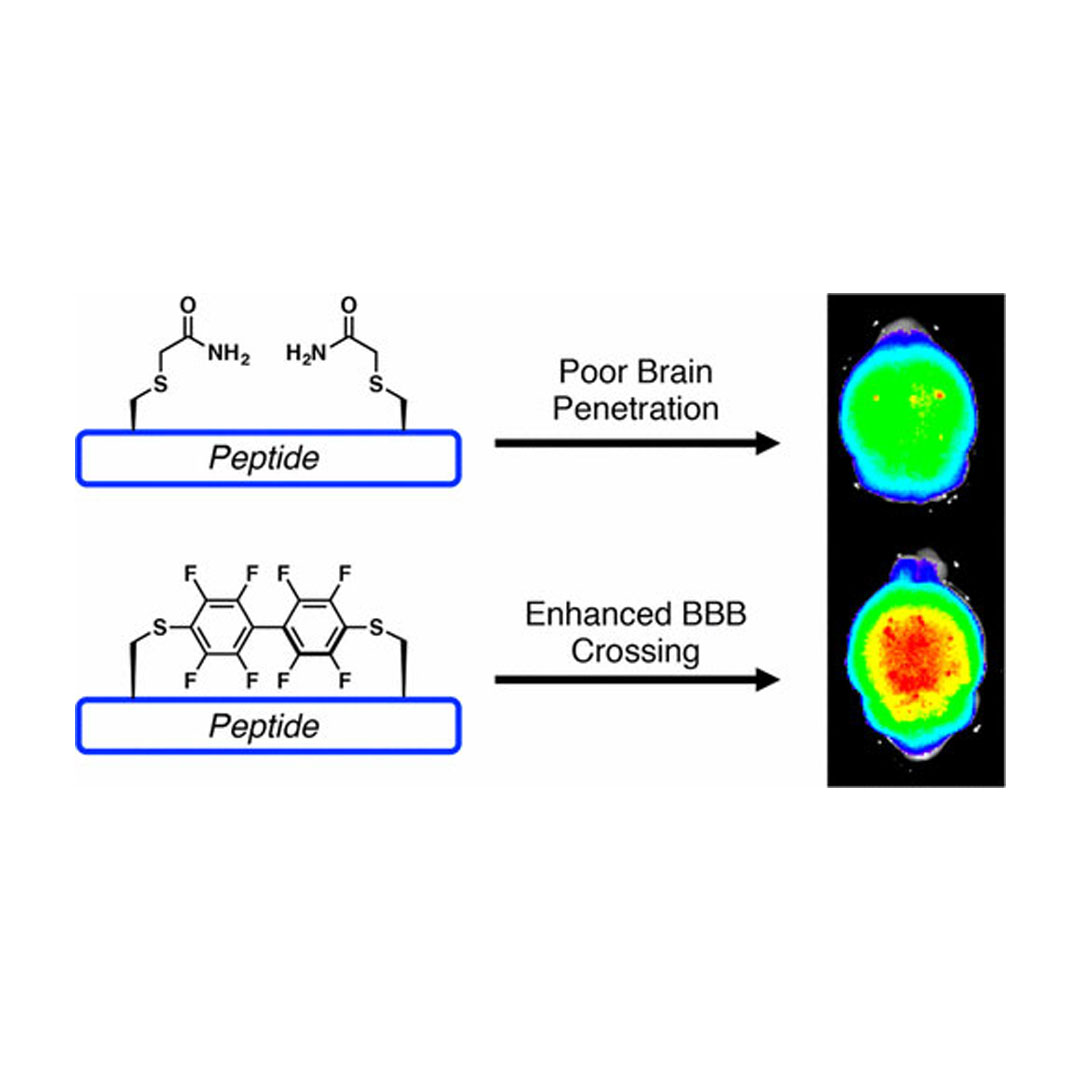Perfluoroarene–Based Peptide Macrocycles to Enhance Penetration Across the Blood–Brain Barrier
Here we describe the utility of peptide macrocyclization through perfluoroaryl-cysteine SNAr chemistry to improve the ability of peptides to cross the blood–brain barrier. Multiple macrocyclic analogues of the peptide transportan-10 were investigated that displayed increased uptake in two different cell lines and improved proteolytic stability. One of these analogues (M13) exhibited substantially increased delivery across a cellular spheroid model of the blood–brain barrier. Through ex vivo imaging of mouse brains, we demonstrated that this perfluoroarene-based macrocycle of TP10 exhibits increased penetration of the brain parenchyma following intravenous administration in mice. Finally, we evaluated macrocyclic analogues of the BH3 domain of the BIM protein to assess if our approach would be applicable to a peptide of therapeutic interest. We identified a BIM BH3 analogue that showed increased penetration of the brain tissue in mice.
Pentelute Lab, MIT, Cambridge, Chemistry, Molecular biology, technology development, peptide, protein-based therapeutics, chemical Biology, de novo sequencing, one-bead one-compound libraries, shotgun nanoliquid chromatography, synthetic peptide mixtures, tandem mass spectrometry,
17073
portfolio_page-template-default,single,single-portfolio_page,postid-17073,bridge-core-3.0.1,qode-page-transition-enabled,ajax_fade,page_not_loaded,,paspartu_enabled,paspartu_on_top_fixed,paspartu_on_bottom_fixed,qode_grid_1200,qode_popup_menu_push_text_top,qode-theme-ver-28.7,qode-theme-bridge,disabled_footer_top,wpb-js-composer js-comp-ver-6.8.0,vc_responsive
Perfluoroarene–Based Peptide Macrocycles to Enhance Penetration Across the Blood–Brain Barrier
Perfluoroarene–Based Peptide Macrocycles to Enhance Penetration Across the Blood–Brain Barrier
J. Am. Chem. Soc., 2017, 139 (44), pp 15628–15631
DOI: 10.1021/jacs.7b09790
Publication Date (Web): October 9, 2017
Colin M. Fadzen, Justin M. Wolfe, Choi-Fong Cho, E. Antonio Chiocca, Sean E. Lawler, and Bradley L. Pentelute
Abstract
Here we describe the utility of peptide macrocyclization through perfluoroaryl-cysteine SNAr chemistry to improve the ability of peptides to cross the blood–brain barrier. Multiple macrocyclic analogues of the peptide transportan-10 were investigated that displayed increased uptake in two different cell lines and improved proteolytic stability. One of these analogues (M13) exhibited substantially increased delivery across a cellular spheroid model of the blood–brain barrier. Through ex vivo imaging of mouse brains, we demonstrated that this perfluoroarene-based macrocycle of TP10 exhibits increased penetration of the brain parenchyma following intravenous administration in mice. Finally, we evaluated macrocyclic analogues of the BH3 domain of the BIM protein to assess if our approach would be applicable to a peptide of therapeutic interest. We identified a BIM BH3 analogue that showed increased penetration of the brain tissue in mice.
Category
2017, Publications





